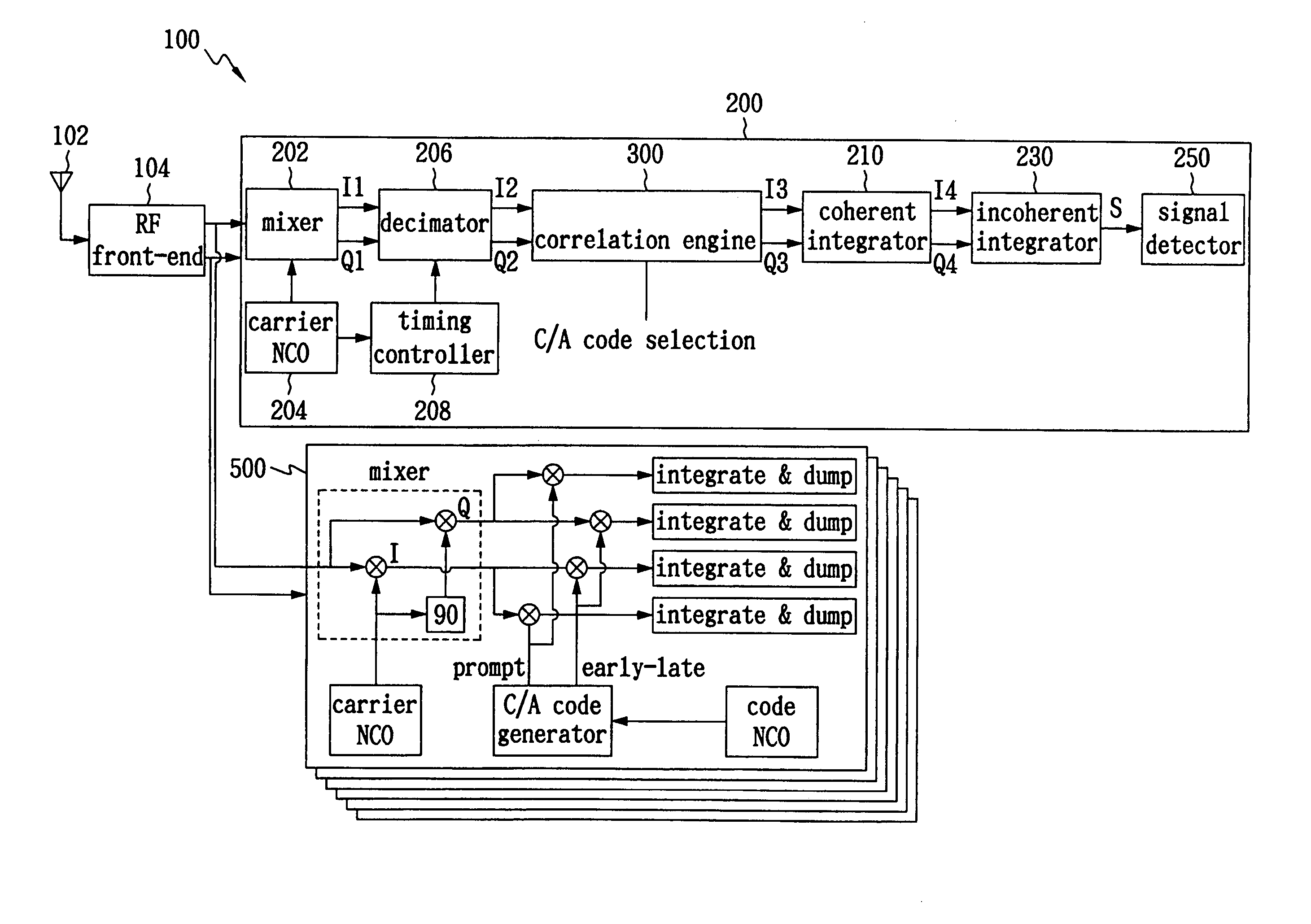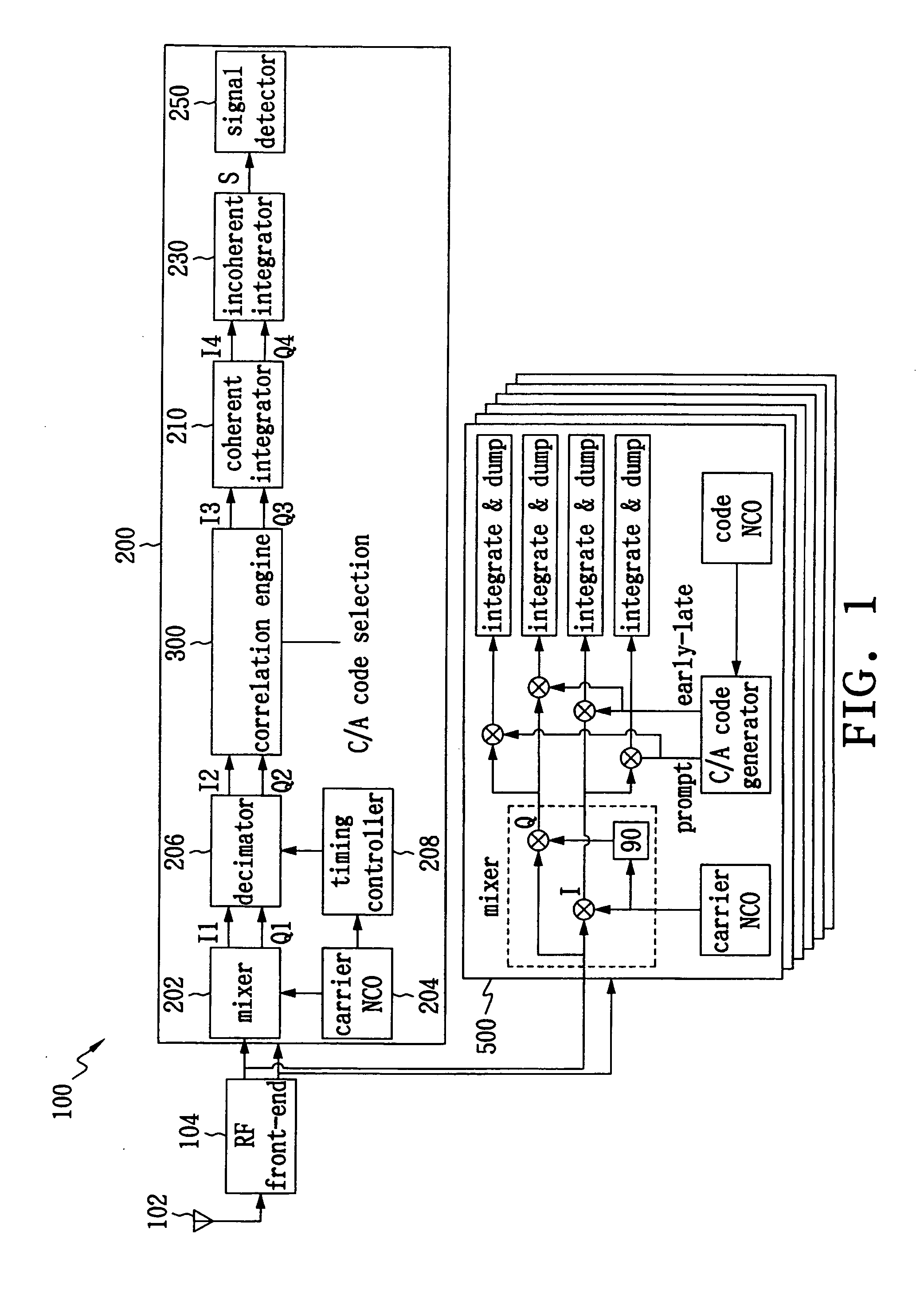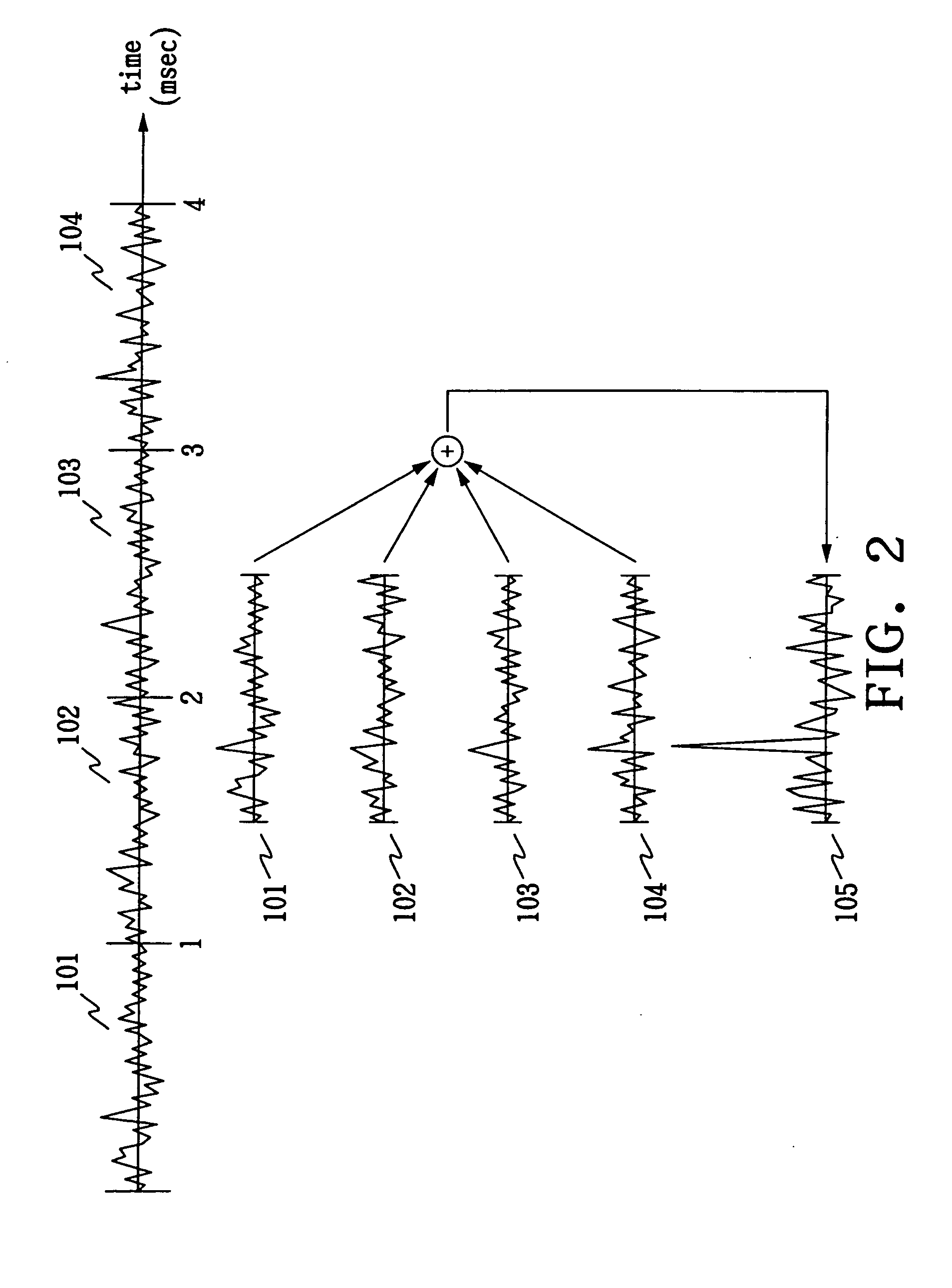Apparatus and method for acquiring spread-spectrum signals
a spread-spectrum signal and apparatus technology, applied in multiplex communication, instruments, transmission, etc., can solve the problems of unreasonably long signal search time, unreasonably slow signal search process, and very time-consuming signal detection process, and achieve the effect of improving the signal-to-noise ratio
- Summary
- Abstract
- Description
- Claims
- Application Information
AI Technical Summary
Benefits of technology
Problems solved by technology
Method used
Image
Examples
third embodiment
[0050]FIG. 10 illustrates the architecture of the correlation engine 300 according to the present invention. The clock of the correlation engine 300 is 261.888 MHz (256 Fo), the RAM buffers 304A and 304B are changed to be 512 word-by-4 bit, and 4 ParCor modules 330A are used in the correlation engine 300 for calculating the partial correlation. The 2.046E6 samples / sec (2 Fo) 1-bit / sample output, I2 and Q2, from the decimator 206 are grouped into 4-bit words by the S / P converters 302A and 302B, with data rate lowered to Fo / 2, or one output every 2-chip period. The 4-bit words are to be written to the 512 word-by-4 bit RAM buffers 304A. With the correlation engine 300 clocked at 256 Fo, there are nominally 512 clocks between every 4-bit word from the output of the serial-to-parallel converter. The preferred embodiment computes 4 points of half-chip-spaced correlation result, across 4 ParCor modules 330A using nominally 512 clocks, for every 4-bit word transferred into the RAM buffer 3...
fourth embodiment
[0051]FIG. 11 illustrates the architecture of the correlation engine 300 for processing ¼-chip-spaced samples (or 4 samples per chip period) according to the present invention. Operation of the previously described embodiment is based on half-chip-spaced samples; here the decimator 206 of acquisition apparatus 200 (SEE FIG. 1) generates ¼-chip-spaced samples (or 4 samples per chip period) from I1 and Q1. The functions of the elements within the acquisition apparatus 200 are still the same as described previously, with width of the parallel-processing data-path and number of ParCor modules 330A, 330B doubled. Rest of the signal processing elements of the acquisition apparatus 200 would require 1 more bit to accommodate the doubling of the correlation result, due to change from integrating 2046 points per frame to integrating 4096 points per frame. The RAM buffers for coherent and incoherent integration would now require 4096 words of storage. The acquisition apparatus 200 still opera...
PUM
 Login to View More
Login to View More Abstract
Description
Claims
Application Information
 Login to View More
Login to View More - R&D
- Intellectual Property
- Life Sciences
- Materials
- Tech Scout
- Unparalleled Data Quality
- Higher Quality Content
- 60% Fewer Hallucinations
Browse by: Latest US Patents, China's latest patents, Technical Efficacy Thesaurus, Application Domain, Technology Topic, Popular Technical Reports.
© 2025 PatSnap. All rights reserved.Legal|Privacy policy|Modern Slavery Act Transparency Statement|Sitemap|About US| Contact US: help@patsnap.com



